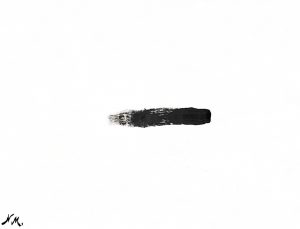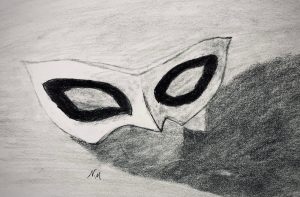Unmasking the Divide
“You think you can fix me too?”
“No, because you are not broken.” – Charles Xavier
For me, the Student Accessibility Services (SAS) office is a lot like Charles Xavier’s School for Gifted Youngsters in X-Men. Xavier’s school was created as a safe place for all students to learn to harness their strengths whilst giving all students a sense of belonging. At Brandon University, SAS is a safe place for students with disabilities to be themselves and find community. My hearing impairment has been no secret to the public, and it is a disability I have no problems with people knowing about. Unfortunately, I do not feel this way about my autism. Even at this university, I tend to keep it hidden from my fellow classmates and professors. However, in the SAS office, I feel more comfortable with people knowing about my autism. This is because in the office, my disabilities are not seen or treated as a weakness or a flaw.
Those who do not meet these standards are often excluded and made to feel as though something is wrong with them.
Disability is a socially constructed concept in that socio-cultural factors determine and reinforce standards of “normality.” Those who do not meet these standards are often excluded and made to feel as though something is wrong with them. This leads to increased feelings of humiliation and isolation. I experienced this firsthand during the Covid-19 pandemic.

Artwork credit: Noah Monk. Divide, 2023.
As someone with a hearing impairment, the move to remote learning at the start of the pandemic was helpful; having access to closed captions for online lectures or copies of the professor’s notes made a big difference in my ability to access course material. However, when classes were moved back to in-person with a mask requirement, my academic performance suffered. This was because I could no longer see the lips of the lecturer, which is something that I rely quite heavily on. To combat this problem, the SAS office managed to get a few transparent masks were designed with the hearing impaired in mind. My lecturers switched to using these masks in class and during office hours. This didn’t help me access other spaces on and off campus, though.
I often think about my peers: those who perhaps have been made to feel ashamed of their disability or as though there is something wrong with them. What are they missing from their educational experience because they are fearful that disclosing their disability will lead to further exclusion and isolation? Are they not worthy of equal access as well?
For ourselves, students, and community members, we can begin changing the zeitgeist and our culture around disability, leading by example.
Learning to accept one’s disabilities is a hard thing to do. Personally, I have not come to fully accept my autism. But the SAS office has helped a lot with that because it is one of the few places where having a disability is not seen as a failing or a mistake in one’s genetic coding. In there, one can ask for help without fear of being judged because of who they are.

Artwork credit: Noah Monk. Unmasking, 2023.
While the SAS office is a safe space for students with disabilities, our campus community can do more. However, everyone knows that the glory of Rome was not built in a day. It is unrealistic to think that we can change the university, community institutions, and culture overnight. So, what can we do? Is there anything we can do? Yes, there is something that can be done immediately. For ourselves, students, and community members, we can begin changing the zeitgeist and our culture around disability, leading by example. Instead of treating things as a disability or handicap, society should celebrate diversity. Persons with disabilities should not be treated like they need to be fixed; they are not broken. To my fellow students, you are not broken. It is not about fixing disabilities; it is about destigmatizing them.
About the Author
Noah Monk is a student at Brandon University, although many would say more than just one thing about who he is. Noah is a visionary, romantic, mathematician, artist. His interests span many fields and disciplines, ranging all the way from Geometrodynamics and Solid-state physics to philosophy and cooking. One of his main goals in life is to inspire people especially those with disabilities that they can do great things too no matter who they are.
